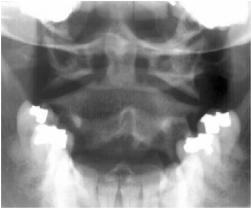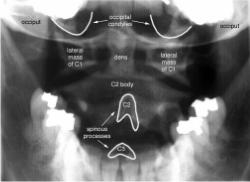Cervical Spine Injuries |
| Normal
Views
|
Fractures and Dislocations | Facet Dislocation - Subluxation |
Evaluation of the cervical spine on plain film is done fairly frequently. This includes settings of both traumatic and atraumatic patients. Provided here are a systematic approach as well as examples of common cervical neck plain film abnormalities.
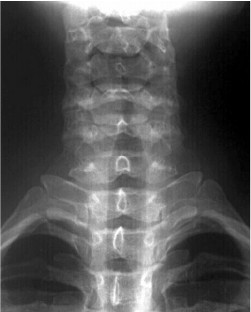
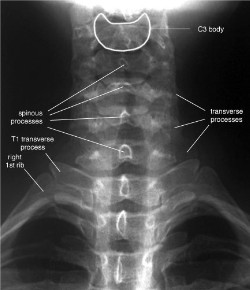
Normal AP (anterior-posterior) view of the cervical spine.
Usually
obtain three views, PA LAT and Ontontoid. Must see all 7 C-vertebrae (top of
T1). If C7 cannot be visualized,
get a swimmers view, if still not, a CT should be considered. Other plain film
views include oblique, flexion, and extension.
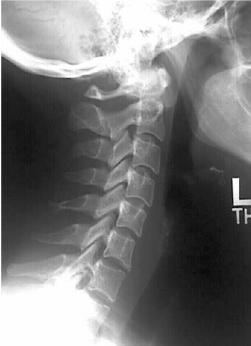
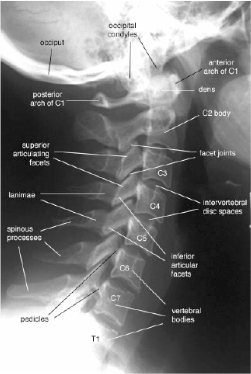
Normal LAT (lateral) view of the cervical spine.
Prevertebral
soft tissues should not measure >7mm at level of C3 and C4, and should not be
>20mm at the level of C6 ( not as reliable)
(In children, 2/3 width of the C2 Vertebral body at the level of C3 and C4 and not >14mm at the level of C6.)
If C2-
C6 soft tissues measure 7-10mm, consider further imaging.
If > 10mm definitely need
additional imaging if reason not apparent on plain film.
Flexion/Extension
– The posterior cortical margin of each cervical vertebral body may be offset
by as much as 3mm.
Note:
failure to visualize 7
cervical vertebrae is the most common error made in the
radiographic assessment of cervical spine injury.
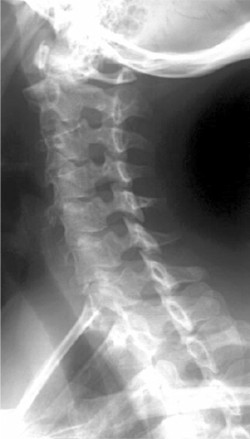
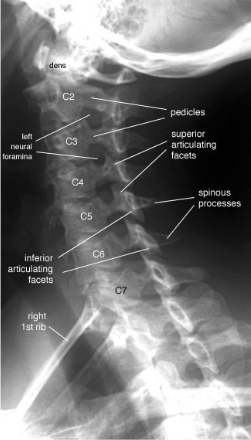
Normal Left Anterior Oblique (LAO) position, allows visualization of the
Left-sided foramina.
Note: With
the head turned to the right (Left Anterior Oblique position), allows
visualization of the Left-sided foramina. The foramina to the left side of the
vertebral bodies will always be the left neural foramina.
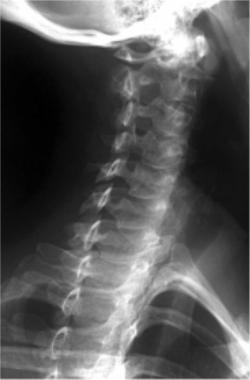
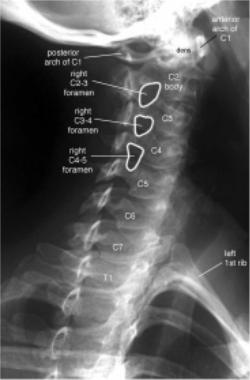
Normal Right Anterior Oblique (RAO) position, allows visualization of the
Right-sided foramina.
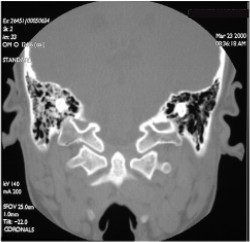
CT scan of T-bone and C1-C2
This section written by:
LCDR Ron Boucher, MC, USN
LT Hugh McSwain, MC, USN
With some assistance from:
CDR Michael Puckett, MC, USN
ENS Robert Post, MC, USNR
